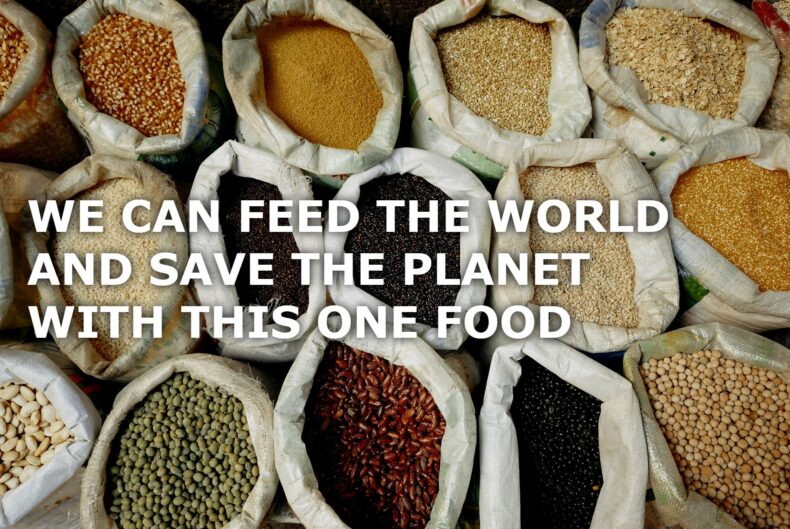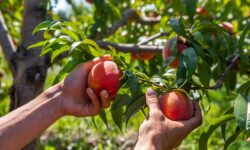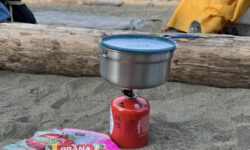Extreme weather throughout the year will cause a shortage of stone fruit in BC: We…
(four-minute read)
Did you know that one in every nine people in the world suffers from hunger? That’s almost 800 million people who go to bed every night on an empty stomach. With our population expected to exceed nine billion by 2050, we will need to more than double the amount of food supply in order to feed the world.
The United Nations declared 2016 as the “International Year of Pulses” as a global marketing effort to promote their commitment to solving world hunger with pulses’ potential to feed a growing population without destroying the planet. So if pulses’ superfood status wasn’t enough, there are now plenty more reasons why you should add these extraordinary legumes to your diet.
What are pulses, and why should you eat them?
Pulses are part of the legume family but differ in that they are harvested solely for the dry seeds. Legumes such as dried peas, lentils, chickpeas, beans are all common pulses. These foods have been harvested by human beings for countless millennia and remain a significant source of food for many remote and indigenous communities all over the world.
Pulses are some of the best sources of protein of all foods–with twice as much protein content as quinoa. They are also packed with fibre, minerals, and B vitamins. Their long list of nutrients and their low-fat content make them one of the healthiest food categories and have produced unprecedented health results.
Their nutritional profile links them to a myriad of health benefits related to heart disease, diabetes, and cancer. Studies have shown that pulses are the one specific food group that the world’s longest-living humans all consume regularly in their diet[i].
Check out the pulses at Spud.ca
Pulses promote sustainability by producing essential soil nutrients.
Few foods can offer equal amounts of health benefits to people and to the planet, but pulses are extraordinary foods that have the ability to alleviate the weight of the eco footprint in our grocery baskets by reinstating nutrients and fertility back into the soil.
Nitrogen is the most important soil nutrient when it comes to crop production, and nitrogen fertilisers are made from fossil fuel, a non-renewable energy source. Pulses help with reducing fossil fuel input by half with their ability to draw their own nitrogen from the air[ii]. It is a special nitrogen-fixation soil bacteria found in the root systems that make pulses so unique. Even after harvest, soil microbial activity and diversity continues to thrive with the nitrogen residue. This allows pulses to reduce the use of fossil fuels required for one whole crop rotation.
But reducing the use of fossil fuel is only half the story. Nitrogen in the form of fertiliser eventually gets converted into nitrous oxide, an extremely potent greenhouse gas with almost 300 times warming potential than the common carbon dioxide. According to Pulse Canada, 60% of greenhouse gas emissions from the agriculture industry in Canada are contributed by nitrous oxide, and the global agriculture industry as a whole contributes up to 12% of greenhouse gas emissions[iii]. This means that pulses not only use less fossil fuel but also reduce the emissions of greenhouse gas.
Pulses require much less water and land and are resilient to climate change.
With so many experts on food security and climate change topics affirming the lack of sustainability regarding the meat industry, pulses might just be the perfect solution. On top of soil benefits, these legumes require almost eighteen times less water to produce the same amount of protein as beef. They also require less acreage to produce the same amount of protein[iv].
Pulses have a much shorter growing season—most are harvested within 90 days—than other crops. This unique trait allows farmers from both farther north and south of the equator to produce crops even where the hot weather is brief. And where climate is predominantly hot year round, pulse crops are still able to flourish due to its hardiness and modest yearning for water.
Pulses can save the world.
Droughts, snowstorms, and floods are all products of climate change. With the increasingly disastrous and capricious weather, food production is now a bigger challenge due to lower profitability and predictability. Adding in factors of environmental footprints, soil exhaustion, land depletion, water shortage, and a growing population, we need to find many solutions, and pulses are definitely one of them. Let’s celebrate the International Year of Pulses. Let’s eat more pulses, feed the world, and save the planet.
[i] http://www.forksoverknives.com/longevity-diet/
[ii] http://www.pulsecanada.com/environment/sustainability/non-renewable-energy
[iii] http://www.pulsecanada.com/environment/sustainability/low-carbon-footprint




